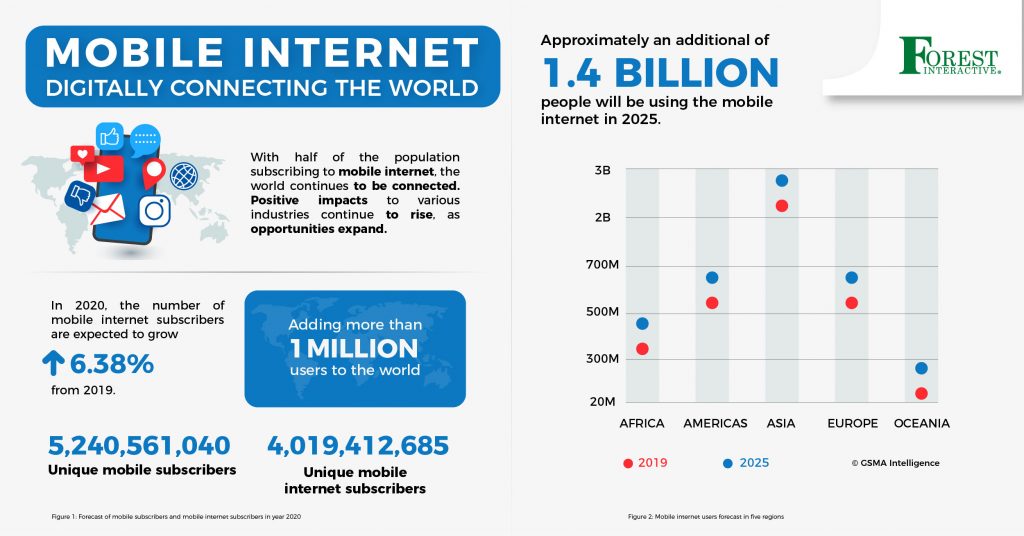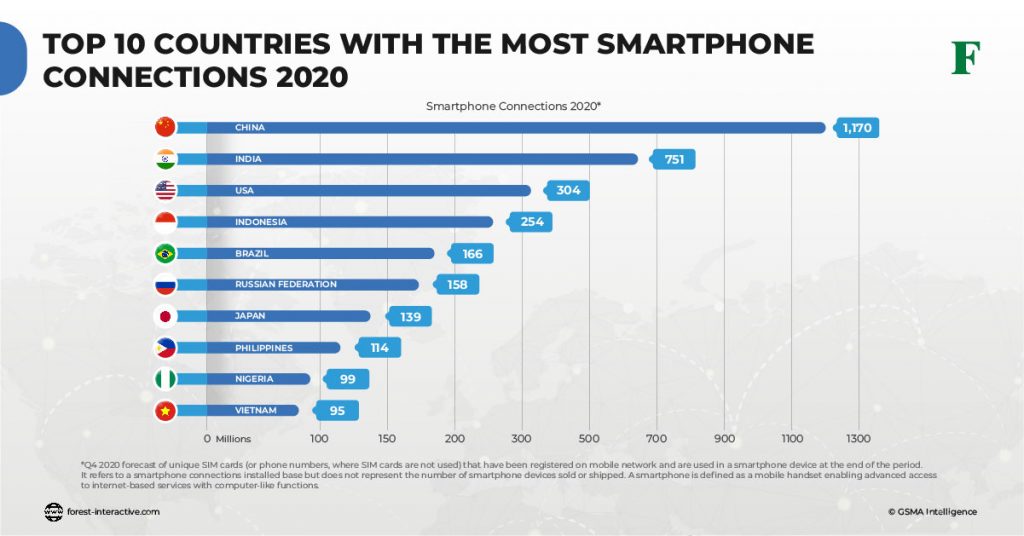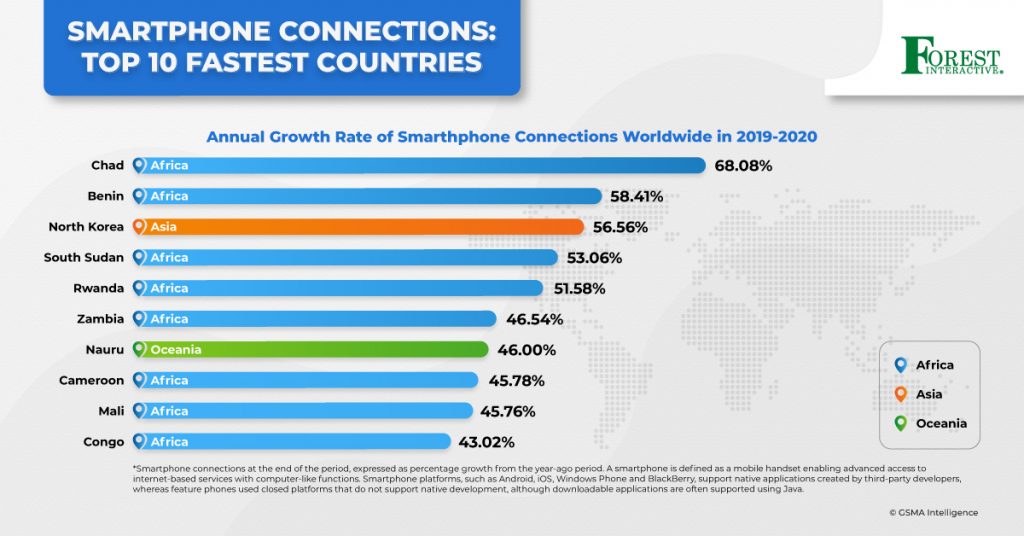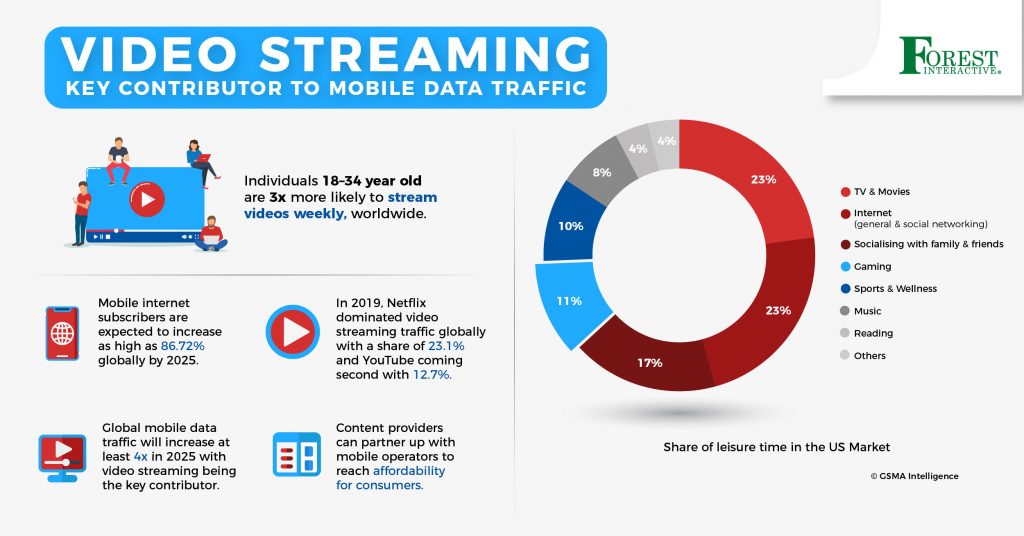
Due to the dynamic nature of the tech sector, the global telecoms industry has undergone a continuously changing business and technology environment over the last two decades. Telecom operators today strive to provide seamless and high-quality voice, data, and multimedia services in a multi-device, mobile environment. However, telcos are facing the biggest challenge to their business from Over-The-Top (OTT) service providers. What is OTT in telecom?
OTT refers to digital service providers that bypass the traditional operator’s network to deliver audio, video, and other media over the Internet. They do not have any technology affiliations with network operators for providing such services, hence they are known as “Over-The-Top” (OTT).
Enhanced by innovations such as smartphones and super-fast IP networks, and the shift in consumer preferences towards their “freemium” based business models, these nimble OTT players pose a credible threat to the telcos’ revenue. The fact that these OTT players offer services that are close substitutes to telco offerings is an issue. The wide variety and utility of apps and services offered by OTT players are simply drawing customers away from the telcos.
The growing impact of OTT services on the global telecoms industry has been a recognized reality for quite some time. Observing the growth in mobile data traffic over time and the ever-expanding use of data by mobile phone users, there are several critical points worth mentioning about OTT’s fast-paced development.
Impact of OTT in Telecom
Here are the key trends driving the adoption of OTT services.
Personalization and Customization
In the last five years, rising smartphone and mobile internet penetration have put the equivalent of a sophisticated and powerful communication device in the pocket of every consumer. Consumers of Internet-connected services are increasingly placing a high value on more integrated access to services of their choice.
The wide variety and huge quantity of information online has led to consumers insisting relevant content to be made available to them at all times. Since consumers spend a huge amount of their time on their smartphones, they want their user experience to be more personalised and one-of-a-kind. This demand has made it necessary for OTT service providers to track the preferences of individual consumers and deliver the right information accordingly.
Growing Preference for OTT Messaging Apps
For the longest time, the principal revenue streams for telcos had been voice and text messaging (SMS), but now data has tremendously overtaken both. While OTT services do utilize the telcos’ network and infrastructure, they do not contribute directly to the telcos’ data revenue.
Driven primarily by cost, smartphone and mobile broadband penetration, and the availability of advanced features, many consumers’ messaging preferences have rapidly and irreversibly shifted from telco SMS and MMS services to OTT messaging services.
- Most OTT services employ a “freemium” based plan, where they provide unlimited messaging to consumers for a small fixed subscription fee or charge consumers only for certain premium features. This means the consumer in effect needs to only pay for mobile data usage.
- OTT messaging services offer a wide range of innovative features such as voice messages, media sharing, stickers, etc. Telco messaging services, on the other hand, have largely remained unchanged with very few noteworthy updates since their inception.
Consumers have been increasingly choosing the OTT option over the telcos’ pay-per-message model. While in matured markets growth in smartphone and mobile broadband penetration has been a key driver for increased OTT messaging adoption, in many developing markets this penetration itself has been fuelled to an extent by the consumers’ desire to use OTT messaging services such as WhatsApp.
Content Distribution
As the consumers’ demand for content remains strong, service providers have been trying to match the supply of content to the demand. They continue to develop their services to seamlessly deliver this content to consumers spread out across geographies, platforms, and mobile devices. This has led to rapid advances in OTT content distribution capabilities.
For example, video content is readily available on different platforms such as YouTube and Netflix, which contributes approximately to half of the Internet traffic. The need to satisfy consumer expectations in regards to convenience and user experience has driven service providers to maintain this focus and keep improving their content distribution mechanisms.
Online User Behavior
Nowadays, the modern consumer can share every small or big emotion, thought and experience instantly with everyone. OTT services have boosted this by including the capability to share exponentially rising quantities of pictures, videos, and audio files. Since OTT service providers have enabled this feature, the cost for sharing information and content is no longer a deterrent in this regard.
With easy, convenient, and instant access to advanced communication technologies, the consumer would only want to share more. Every day there are increasingly more and more social groups formed online that are driven by the sharing of user-generated multimedia content. This can be seen by the emergence and power of top OTT apps like Instagram, Snapchat, WeChat, etc.
OTT Services in Telecom
Although telecom operators are facing a legitimate challenge from OTT service providers, they are well-placed to confront them. Telcos can benefit from analysing the consumer trends and factors that are leading to the adoption of OTT services. It can help them in service development, marketing strategies, etc. The following three solutions are all long-term strategies for maintaining and even increasing telcos’ revenues:
Bundling with OTT
Many operators are considering the strategy wherein they bundle offers in such a way that there is an alternative deal to using OTT services for a cost saving. For example, by bundling data or voice package with an SMS plan at an affordable price, telcos can maximize their revenues from all streams.
Nowadays, content bundling has become a popular way for telcos to bundle data-intensive OTTs like video apps (Netflix) with their normal subscription plans, thus leading to increased data usage. Putting a monthly limit instead of charging per MB would also enhance the customer experience as this eliminates the fear factor for customers when signing up for a value-added service.
Developing Their Own Services
Another long-term strategy for telcos would be to introduce their own OTT services. This will allow them to have full control over service development and also enable them to integrate with other services within their offerings. The telco can either grow the necessary expertise in-house or acquire an existing company with relevant skills and a technology base.
Although it may not be the fastest route to market, telcos can leverage their existing assets (control over the network, customer insights, customer service, and distribution channel) to differentiate their OTT services from other offerings in the market. However, this strategy would necessitate the kind of investment that can be quite high and the approach is risky for telcos that do not have the necessary skills to launch such services.
Partnering with OTT
If steep competition is a concern, partnering with the opponent can be a good strategy when it is difficult to beat them at their game. Many telecom operators are already resorting to this strategy wherein they collaborate with OTT players and benefit from their subscriber base.
This enables the telcos to leverage the incoming traffic and gain a share of the revenues by incentivising the consumers’ mobile broadband usage. However, there will be limited or almost no control over the direction as well as the quality of the OTT services offered through these partnership deals. Moreover, telcos may only reap the benefits so long as their partner brand is in demand.
Related topic: How to Increase ARPU in Telecom for the 5G Era
Where to Start
With a slew of user-centric features and social apps on the rise, telcos need to interact with their customers better by providing more seamless communication with their connections and brands.
If you want your company to get ahead of the competition, partner with a provider that understands your needs, your market, and the necessary technicalities in-between. Let’s discuss how our Digital Service Delivery Platform and USSD Messaging Gateways can help you get in touch better with your customers. Contact us today.












